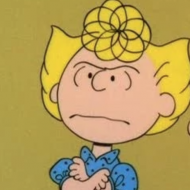When I was five years old, my parents left my brothers and me with a babysitter and went to a church auction. They returned–fantastically, inexplicably, unprecedentedly–with a secondhand ColecoVision and a box of games, and I hopped from foot to foot as my dad delicately connected the console’s wires to the back of the TV in my parents’ bedroom. The controllers had a joystick at the top and a numbered pad below, like a phone, and the buttons needed to be pushed hard.
I had never played a video game before. And I didn’t play them much now, choosing instead to lie on my parents’ bed and watch Dad beat Looping, Fury, and Carnival. Mom was good at Venture, which featured a skull-like character that made an undulating moaning sound when it attacked. My brothers and I called it the Wah-Wah Monster. I couldn’t believe that my parents–adults!–liked playing the games as much as I liked watching them play. They were 28.
Eventually, my brother Nick became a better gamer than my dad. We moved to a bigger house. We got a Nintendo. My parents divorced. My mom bought Nick a Super NES. We sold the ColecoVision in a garage sale somewhere along the way.
